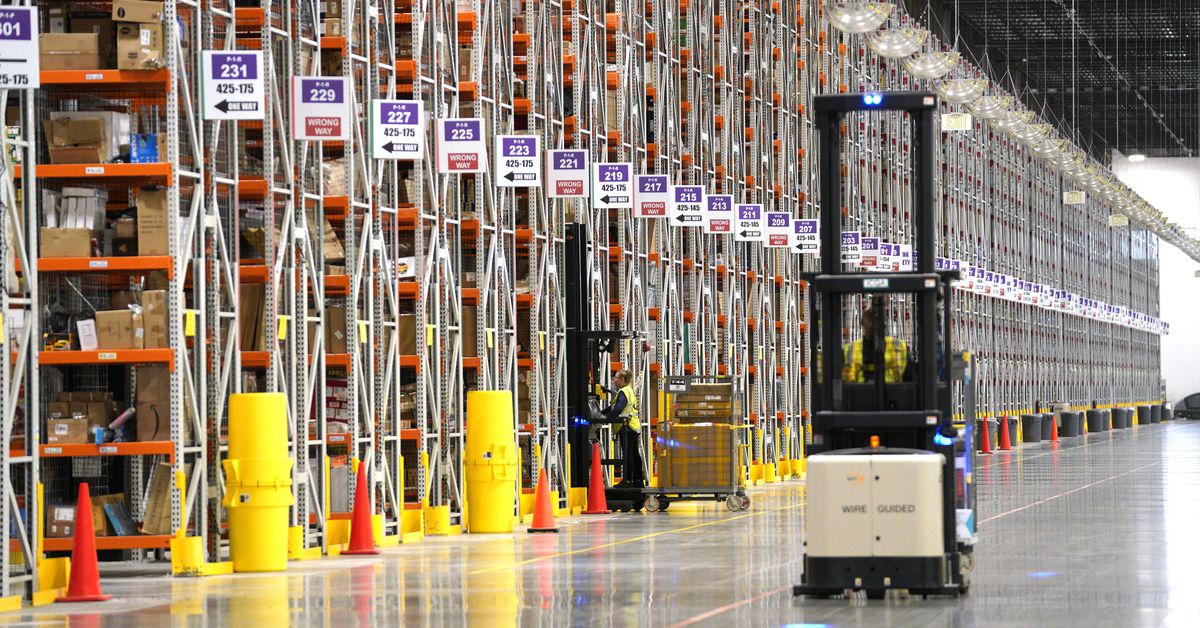Amazon thinks hydrogen can be a more sustainable fuel for vehicles at its warehouses, but it’ll have to clean up hydrogen production first.
Powered by piss jugs
Powered by piss jugs
Way of the road, Bubs
Way she goes
Strange. I’m sure that H2 has benefits to larger vehicles like Trucks. But on small vehicles like forklifts, I thought that battery technology (even Lead-Acid batteries) were sufficient?
Did the H2 fuel cell shrink down in size recently to make forklift-sized vehicles usable for H2 fuel? This is a development that surprises me.
There are fuel cell powered drones out there. Size hasn’t been an issue for a long time.
Do you know what the technology is for the pressurized H2 at these sizes? Its been my understanding that larger vehicles scale better (ie: thicker walls and bigger containers) to better deal with the H2 volume issue.
Bigger vehicles can take advantage of exotic / expensive processes like liquified H2 or 700-bar pressures or whatnot. I don’t think that’s been miniaturized to drone or forklift sizes though.
They’re still using pressurized gas tanks. Apparently, not even a drone is not too small for such things.
What an edifying thread, thank you both for knowing stuff about things
The drones generally don’t use compressed hydrogen (at least the ones I’ve seen). It’s too dangerous. Instead they use a pellet based storage system. You can liberate hydrogen from it, but it’s rate limited. It will burn, but it can’t launch like a flaming rocket.
The downside is the pellet systems aren’t as simple as just refilling the tank.
If the electrolyzer is using green electricity it will be good but it doesn’t say if they are setting up the wind or solar plants to source that power. If they are using line power then its only 40% likely to be green energy produced.
The article says the current plan is to use line power…so not perfect. But if it’s more efficient then charging dc batteries it could be worth it, plus the grid could always change. Waste wise you wouldn’t have to throw out any lead acid or lithium ion batteries when they finally die, which is an environmental win. Not sure if this is for only new facilities or not but if you do have to buy all new equipment and scrap all your old stuff that is an environmental loss.
I’m skeptical of hydrogen for consumer vehicles, but it makes total sense for something like this where refueling stations can be built on-site. If they can solve the refueling problem, there’s no reason to have 200+ expensive batteries for a fleet of electric forklifts.
If they plug Bozos in they’ll have an unlimited supply of hot air.
This is the best summary I could come up with:
But the potential environmental benefits are still hard to measure, and depend a lot on how policymakers and companies like Amazon shape the supply chain for hydrogen.
Hydrogen produces water vapor instead of greenhouse gas emissions during combustion, a trait that’s made it more attractive to companies and governments working to meet climate goals.
The Biden administration is trying to change that through tax incentives and billions of dollars in federal funding for clean hydrogen production hubs.
The electrolyzer is plugged into the power grid, and fossil fuels still make up about 60 percent of the US electricity mix.
The company is looking into pairing it with renewable energy generated on site, but doesn’t have a concrete timeline for when that might happen, according to Jafry.
It also made a commitment in 2019 to reach net zero greenhouse gas emissions by 2040, although the company’s most recent sustainability report shows that its carbon footprint has actually grown by about 39 percent since then.
The original article contains 591 words, the summary contains 163 words. Saved 72%. I’m a bot and I’m open source!
Andy Jassey’s bullshit should produce enough gas.





